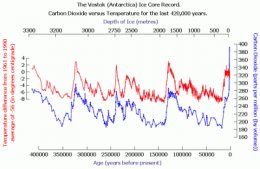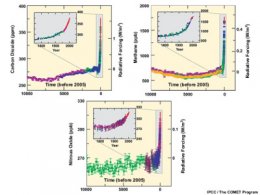Short report on global warming
 Hello and welcome to my first blog post! I can’t really start without an explanation of how global warming occurs, as this is one of the most fundamental reasons why climate science exists! So here we go…
Hello and welcome to my first blog post! I can’t really start without an explanation of how global warming occurs, as this is one of the most fundamental reasons why climate science exists! So here we go…
The Earth’s atmosphere allows life as we know it to exist. Without it, global temperatures would be around 33-35 oC colder. The gases that make up our atmosphere can absorb some of the sun’s energy leading to an increase in temperature. Energy from the Sun reaches the Earth in the form of light and heat. The Earth has the ability to absorb all of this radiation but some is reflected back into space either by the Earth’s surface or by its atmosphere. This process is called the Albedo Effect and without it the Earth would be much warmer. The Earth re-radiates energy at a slightly longer wavelength that can be absorbed by some atmospheric gases. These gases then re-radiate this as thermal energy.
A measure of how strong an effect this re-radiated energy has on the Earth’s temperature is called a gas’ radiative forcing. Radiative forcing is the difference between radiant energy received by the earth and energy radiated back into space, and its units are in watts per meter squared (Wm-2). The gases that contribute most to the greenhouse effect, in terms of their radiative forcing, their lifetimes and also their abundance in the atmosphere include carbon dioxide (CO2), water vapour (H2O) and methane (Ch4). The relationship between temperature and concentrations of these gases is strikingly positively correlated, as the graph below shows. In another blog I plan to explain more about how the Earth’s temperature has changed throughout geological history.
In another blog I plan to explain more about how the Earth’s temperature has changed throughout geological history.
Almost all atmospheric gases have both natural and anthropogenic (man-made) sources. In fact, for most of the major greenhouse gases natural sources outweigh man-made. Since the Industrial Revolution, however, anthropogenic emissions have been rapidly increasing. The plots below, published by the Intergovernmental Panel on Climate Change (IPCC), show just how high the atmospheric concentrations have risen. It is this increase, or offset from the pre-industrial balance between sources and sinks, that is causing temperatures to rise. For more information on the IPCC and its soon to be released 5th assessment report click here. Or if you want a more detailed summary of all the aspects of climate change this ‘summary for policy makers’ is really interesting.

